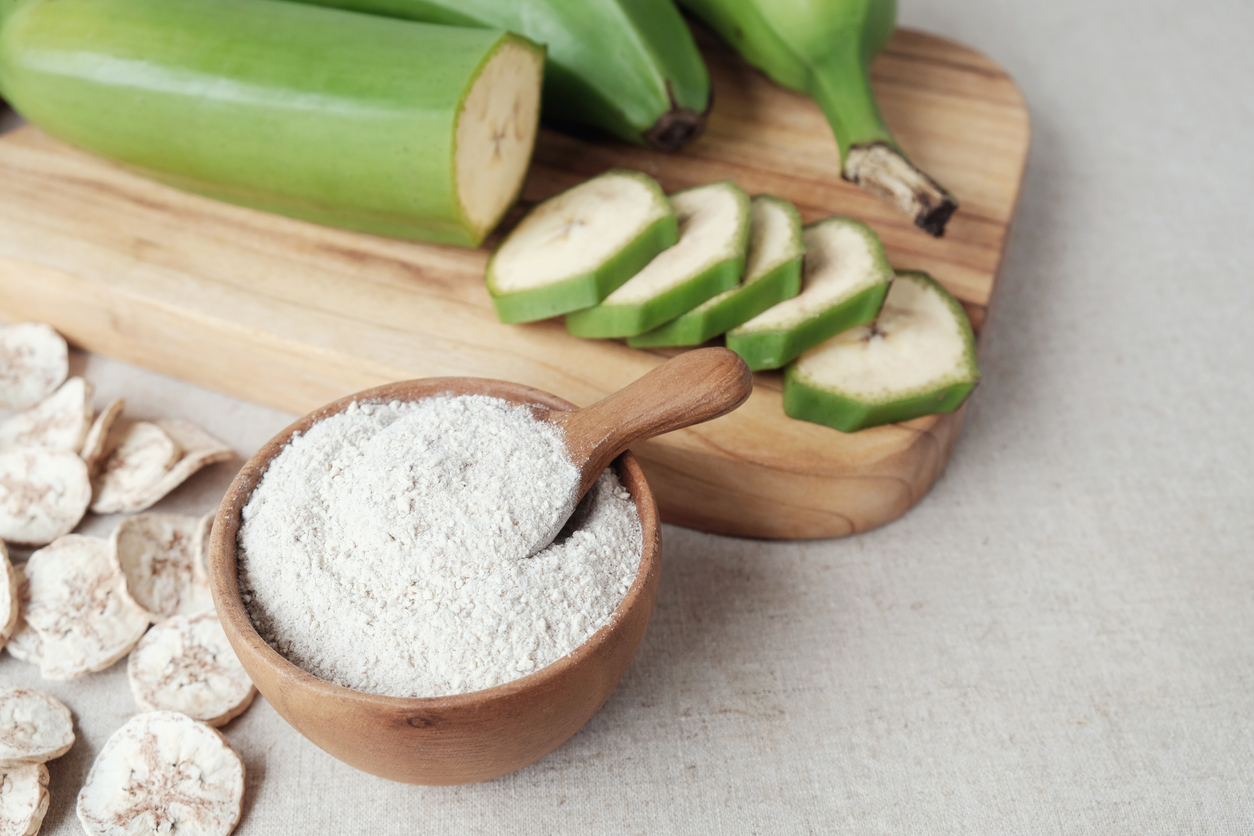Exploring the versatility of green plantain: A staple food from Colombia
Exploring the versatility of green plantain: A staple food from Colombia
Are you tired of the same old boring meals? Looking to spice up your culinary adventures with a taste of South America? Well, look no further because we have just the thing for you – green plantain! Hailing from Colombia, this versatile staple food is about to revolutionize your kitchen. From mouthwatering traditional dishes to innovative twists on international favorites, there’s no limit to what you can create with this incredible ingredient. So put on your chef hat and join us as we embark on an exciting journey exploring the countless possibilities and flavors that green plantain brings to the table!
Introduction to Green Plantain: History and Origin
Green plantains, also known as plátanos in Spanish, are a staple food in many Latin American countries, particularly Colombia. This versatile fruit is often used in traditional dishes and has a rich history and origin that dates back centuries.
Originating from the tropical regions of Southeast Asia, green plantains were brought to the Caribbean and Latin America by Spanish explorers during the 15th and 16th centuries. They quickly became an essential part of the diet for indigenous communities living in these areas due to their high nutritional value and ease of cultivation.
One theory suggests that green plantains were first introduced to Colombia through African slaves who brought their knowledge of cultivating and cooking with this fruit from West Africa. Another theory states that they were brought over by Spaniards who planted them on Colombian soil during their colonization efforts.
Regardless of how they arrived in Colombia, green plantains have become deeply ingrained in the country’s culinary culture. They are now considered one of the main sources of carbohydrates for Colombians, along with rice and potatoes.
In fact, green plantains are so ubiquitous in Colombian cuisine that they are often referred to as “the potato of Latin America.” They are also a primary ingredient in many iconic dishes such as patacones (fried smashed plantains), tajadas (sliced fried plantains), and sancocho (a hearty soup/stew).
Nutritional Benefits of Green Plantain
Green plantains are a staple food in many Latin American countries, including Colombia. They are often seen as just a starchy side dish or used to make patacones (fried plantain slices). However, green plantains have a lot more to offer than just their delicious taste and versatility in cooking. They also provide numerous nutritional benefits that make them an excellent addition to any diet.
1. Rich in Fiber:
One of the most significant health benefits of green plantains is their high fiber content. A single cup of cooked green plantains contains about 4 grams of dietary fiber, which is about 14% of the recommended daily intake for adults. Dietary fiber plays a crucial role in maintaining digestive health and can help prevent constipation, bloating, and other gastrointestinal issues.
2. Good Source of Vitamins:
Green plantains are also packed with essential vitamins such as vitamin C, vitamin A, and B vitamins like thiamin and niacin. Vitamin C is an important antioxidant that helps boost the immune system and protects the body from free radical damage. Vitamin A is vital for eye health and maintaining healthy skin, while B vitamins play a role in energy metabolism.
3. High in Potassium:
Potassium is an essential mineral that helps regulate fluid balance in the body and supports nerve function and muscle contraction. Green plantains are an excellent source of potassium, with one cup providing around 25% of the recommended daily intake for adults.
Common Uses in Colombian Cuisine
Colombian cuisine is known for its bold flavors and diverse ingredients, with influences from Indigenous, Spanish, African, and Caribbean cultures. One ingredient that stands out in many traditional Colombian dishes is the green plantain. In this section, we will delve into the common uses of green plantains in Colombian cuisine.
1. Patacones (Fried Plantains)
Patacones are a staple dish in Colombian cuisine and are made by slicing unripe green plantains into thick rounds and frying them twice to create a crispy exterior. They are typically served as an appetizer or side dish with aji sauce or hogao (a tomato-based sauce). Patacones can also be topped with different ingredients such as shredded chicken or beef, cheese, and avocado to make a hearty meal.
2. Tostones (Smashed Plantains)
Tostones are another popular way to prepare green plantains in Colombia. Similar to patacones, they are made by frying sliced unripe plantains twice until they are crispy on the outside. However, instead of leaving them as rounds, tostones are flattened using a kitchen tool called a tostonera and then fried again until golden brown. They can be served as an accompaniment to main dishes or enjoyed on their own with toppings like guacamole or salsa.
Traditional Recipes Using Green Plantain
Green plantains are an essential ingredient in traditional Colombian cuisine, and they are used in a variety of dishes. From savory to sweet, these versatile fruits can be prepared in many ways to create delicious meals that showcase the unique flavors of this staple food.
In this section, we will delve into some of the most popular traditional recipes using green plantain in Colombia.
1. Patacones (Fried Plantains)
Patacones are a beloved snack or side dish made from sliced green plantains that are twice-fried until crispy. This dish is simple yet flavorful and can be found in almost every Colombian household.
To make patacones, start by peeling the green plantains and slicing them into thick rounds. Fry them in hot oil until they turn golden brown on both sides. Remove them from the oil and flatten each round with a kitchen tool or the bottom of a glass.
Next, fry the flattened slices again until they turn crispy and lightly salt them while still hot. Serve patacones as a side dish with your favorite dipping sauce or as an appetizer topped with shredded cheese, guacamole, or salsa for added flavor.
2. Tostones (Twice-Fried Plantain Chips)
Tostones are similar to patacones but cut into thin strips instead of rounds. They are also double-fried like patacones for extra crunchiness but have slightly different seasonings.
Modern Twists on Traditional Dishes
Traditional dishes are an integral part of any culture, representing the history and heritage of a particular region. In Colombia, one such staple food that holds significant cultural importance is the green plantain. Known as plátano verde in Spanish, it is a versatile ingredient that has been used in traditional Colombian cuisine for centuries.
However, with changing times and evolving taste buds, chefs and home cooks have put their own spin on these traditional dishes by incorporating modern twists. In this section, we will explore some of the creative ways in which green plantains are being used to give a new twist to classic Colombian recipes.
1. Plantain Chips with Avocado Dip: Plantain chips are a popular snack all over Colombia. They are made by thinly slicing ripe plantains and frying them until they turn crispy. While traditionally served with guacamole or salsa, a modern twist on this dish is pairing the plantain chips with creamy avocado dip instead. This adds a refreshing flavor to the otherwise savory snack.
2. Plantain Arepas: Arepas are flatbreads made from cornmeal that can be filled with various ingredients such as cheese, meat or vegetables. A modern take on this traditional dish is using mashed green plantains to make the dough instead of cornmeal. The result is a hearty and gluten-free alternative to regular arepas.
Healthier Alternatives to Fried Plantains
Plantains are a staple food in many countries, including Colombia. They are versatile and can be cooked in a variety of ways, including frying. However, fried plantains may not always be the healthiest option as they are often high in calories and unhealthy fats.
Fortunately, there are several healthier alternatives to fried plantains that still pack all the delicious flavors and textures of this beloved dish. Here are some options to try:
1. Baked Plantains:
Baking plantains is a great alternative to frying them. Simply slice the plantains into thin rounds and place them on a baking sheet lined with parchment paper. Brush them with a little bit of olive oil and sprinkle with your favorite herbs or spices for added flavor. Bake at 375 degrees Fahrenheit for about 15-20 minutes until they are golden brown and crispy on the outside.
This method significantly reduces the amount of oil used compared to frying, making it a healthier option.
2. Grilled Plantains:
Grilling plantains is another great way to enjoy this delicious fruit without all the extra fat from frying. Simply slice the plantain lengthwise into halves or quarters, brush them with olive oil, and grill over medium-high heat for about 4-5 minutes on each side until they’re slightly charred.
The grilling process adds a smoky flavor to the plantains while also keeping them juicy on the inside.
Non-Culinary Uses for Green Plantain
Green plantains are not only delicious and nutritious in culinary dishes, but they also have many non-culinary uses that make them a versatile staple food in Colombia. From home remedies to household products, here are some of the creative ways you can use green plantains beyond cooking.
1. Home Remedies:
In traditional Colombian medicine, green plantains have been used for their healing properties. They are rich in vitamins A and C, as well as potassium and magnesium, making them great for boosting immunity and treating various health conditions. Here are some common home remedies using green plantains:
– Relief from Insect Bites: The sap from the peel of a green plantain can be applied topically to soothe insect bites and stings.
– Treatment for Diarrhea: Boiled green plantain skins or tea made from dried green plantain peels has been known to alleviate diarrhea due to its high fiber content.
– Skin Care: Mashed green plantains can be used as a face mask to treat acne and improve skin texture.
– Digestive Aid: Green Plantain tea is believed to help with digestion issues such as stomach ulcers and constipation.
2. Household Products:
Green plantains have natural cleaning properties that make them useful in maintaining a clean home without harsh chemicals. Here are some ways you can use green plantains around your house:
Conclusion: Why You Should Incorporate Green Plantain Into Your Diet
It is clear that green plantains are a versatile and nutrient-rich food that can bring various health benefits to your diet. Incorporating this staple food from Colombia into your meals can not only add unique flavor but also provide essential nutrients to support a well-rounded diet.
One of the main reasons why you should incorporate green plantains into your diet is because they are a great source of dietary fiber. Just one cup of cooked green plantains contains about 3.5 grams of fiber, which is essential for maintaining a healthy digestive system and promoting regularity. This high-fiber content can also help lower cholesterol levels and reduce the risk of heart disease.
Moreover, green plantains are packed with vitamins and minerals such as vitamin A, C, and potassium. Vitamin A is crucial for maintaining healthy eyesight and immune function, while vitamin C supports collagen production and boosts the immune system. Potassium plays an important role in regulating blood pressure and fluid balance in the body.
Additionally, incorporating green plantains into your diet can be beneficial for weight management. As they are low in calories and high in fiber, they can help you feel fuller for longer periods without consuming excess calories. Green plantains also have a low glycemic index, meaning they do not cause sharp spikes in blood sugar levels like other starchy foods do.








Comments are closed.